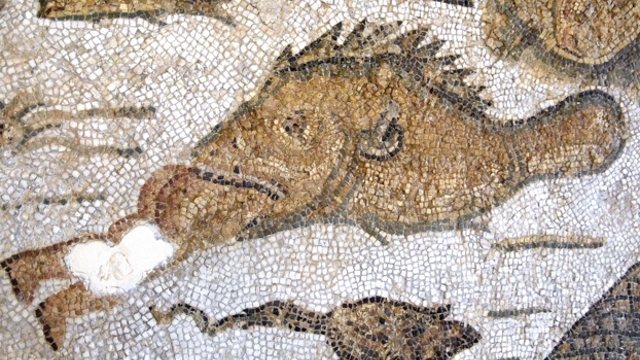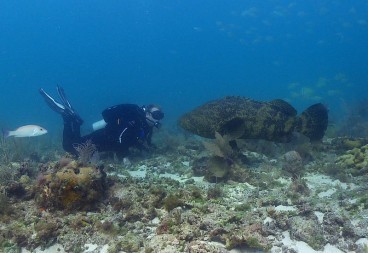
Groupers are enormous fish. Some species grow over two meters long and weigh hundreds of kilograms. Unfortunately for groupers, they are also delicious fish. Since prehistoric times, humans have been devouring all kinds of grouper species all over the world.
Such long-term fishing pressure tends to reduce fish size, as well as reducing the number of fish in the sea. Certain species, like the dusky grouper in the Mediterranean, have been fished for so long that we don't even know what a pristine population would look like.
Fortunately for groupers and for the scientists studying them, these fish are aesthetically appealing as well as huge and tasty. Dusky groupers can be recognized in Etruscan, Greek, and Roman artwork dating back thousands of years.
Paolo Guidetti of the University of Salento in Italy and Fiorenza Micheli of Stanford's Hopkins Marine Station studied this ancient art for biological clues. Frequent depictions of enormous fish in shallow water, including one swallowing a person, led them to conclude that today's small, deep-water dusky groupers are not the species' natural state.

Of course, as the authors point out, "there are no known instances of dusky groupers attacking human swimmers." Could the size of the fish have been similarly fabricated? Simon Blanford of Penn State University and Andrew Stoehr of Denison University took up this question with humorous gusto.
